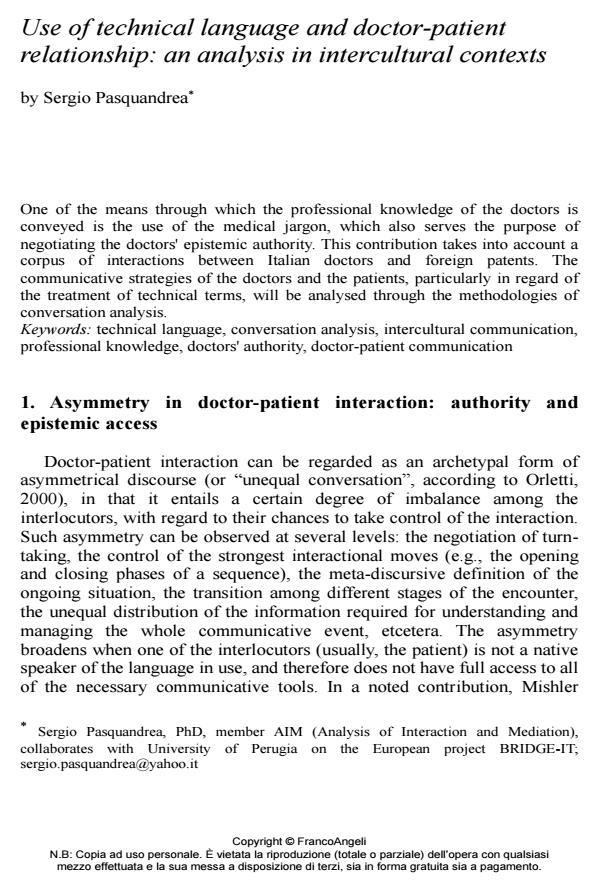Use of technical language and doctor-patient relationship: an analysis in intercultural contexts
Titolo Rivista SALUTE E SOCIETÀ
Autori/Curatori Sergio Pasquandrea
Anno di pubblicazione 2013 Fascicolo 2013/1EN
Lingua Inglese Numero pagine 22 P. 82-103 Dimensione file 410 KB
DOI 10.3280/SES2013-001007EN
Il DOI è il codice a barre della proprietà intellettuale: per saperne di più
clicca qui
Qui sotto puoi vedere in anteprima la prima pagina di questo articolo.
Se questo articolo ti interessa, lo puoi acquistare (e scaricare in formato pdf) seguendo le facili indicazioni per acquistare il download credit. Acquista Download Credits per scaricare questo Articolo in formato PDF

FrancoAngeli è membro della Publishers International Linking Association, Inc (PILA)associazione indipendente e non profit per facilitare (attraverso i servizi tecnologici implementati da CrossRef.org) l’accesso degli studiosi ai contenuti digitali nelle pubblicazioni professionali e scientifiche
One of the means through which the professional knowledge of the doctors is conveyed is the use of the medical jargon, which also serves the purpose of negotiating the doctors' epistemic authority. This contribution takes into account a corpus of interactions between Italian doctors and foreign patents. The communicative strategies of the doctors and the patients, particularly in regard of the treatment of technical terms, will be analysed through the methodologies of conversation analysis.
Parole chiave:Technical language, conversation analysis, intercultural communication, professional knowledge, doctors' authority, doctor-patient communication
Sergio Pasquandrea, Use of technical language and doctor-patient relationship: an analysis in intercultural contexts in "SALUTE E SOCIETÀ" 1EN/2013, pp 82-103, DOI: 10.3280/SES2013-001007EN